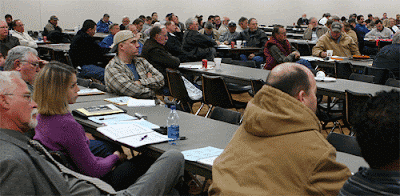
I've been staying at the same hotel in College Station for the past twenty years and have watched many managers and more than one remodeling come and go. I've got a grudging affection for the place, despite it's worn sidewalks and sometimes thin walls. Maybe it's convenience, maybe it's because the place is a magnet for other Extension employees during conferences, and maybe it's just the relationship you develop with a business partner over time. Mostly the place has returned my loyalty with good service and a friendly staff--not to mention, free Internet and breakfasts.
My colleagues and I joke about it being time to move to better accommodations, but until this week I've resisted. On two different nights this week I found a cockroach in my room (neither of which survived the encounter, I should add).
The strength of my repulsion about the cockroaches surprised me. I'm not one to regularly check my headboard for bed bugs before settling in a hotel room. Spiders don't bother me at all (unless they're brown recluse spiders). But the free-range German cockroaches in my room changed my feelings about my room.
Don't get me wrong. I'm not especially squeamish about German cockroaches. I handle them in the lab; I've reared them and even bought them, for goodness sake. But it's different when they show up next to your bed stand. I start wondering, "Where else has this guy been?" "Where will he go when the lights are out?" and "Do I open my mouth when I snore?"
To me as a customer, the cockroach was more than an icky bug . It represented an invasion of my quiet place--the place I come to relax at the end of the day and sort out my thoughts--the place I expect to be even cleaner and more tidy than my own home (at least messes at home are my messes). To me, it ultimately represented a lack of caring on the part of the hotel management and staff.
Now I know it's probably impossible for a hotel to guarantee that a guest will never encounter a pest. And I hope and believe, after reporting my concerns, that this hotel will call a professional to service and inspect that room--and rooms around it. But I also know that for every cockroach seen when the lights are on, there are probably at least a dozen more in hiding. One cockroach might be an accident. As an entomologist, I know that two is no accident.
The funny thing is that the night after I discovered my unwanted visitors, I entered my room to find that it hadn't been serviced that day. Trash in the trash can, bed unmade, towels where I left them in the morning. It was still the cockroach that caused me to decide to find alternative accommodations, but the poor room service confirmed to me that my first reaction was correct. The hotel didn't care any more.
So why the long rant about last week's hotel stay? The incident reminded me of the importance of customer service and the importance of the pest control industry. To some people we may just be the "bug guys" and "bug gals", but we know better. We keep people in business while protecting the public.
Lest we pat ourselves on the backs too hard, a word about quality of service: It's too easy to pass the buck. If that hotel had pest control service, and it probably did, someone wasn't doing their job. Having been a technician long ago, I know how monotonous some service routes can be. It's always a temptation to slack off in an account, especially one without much "action". Hotels can be among the toughest, because typically you don't see a lot of problems. It's too easy to fall into a careless routine room after same room...e.g., spray [or, if you're doing "IPM", bait] under the sink and behind the toilet and you're out of there.
If your company services hotels, remind your employees to treat every room as if it were the only room they serviced that day. For the hotel's customers, each room is the only room they will see that day. For as few as one or two cockroaches, your hotel might lose a loyal customer--one that likely will tell others. Soon that hotel, your customer, is losing business as it gains the reputation as the hotel with "roaches". And that's bad for your business as well as the hotel.
I'm not sure where I'll stay next time I visit the home of Texas A&M University. But I know what my standards are. And a pest free room is at the top of my list.



